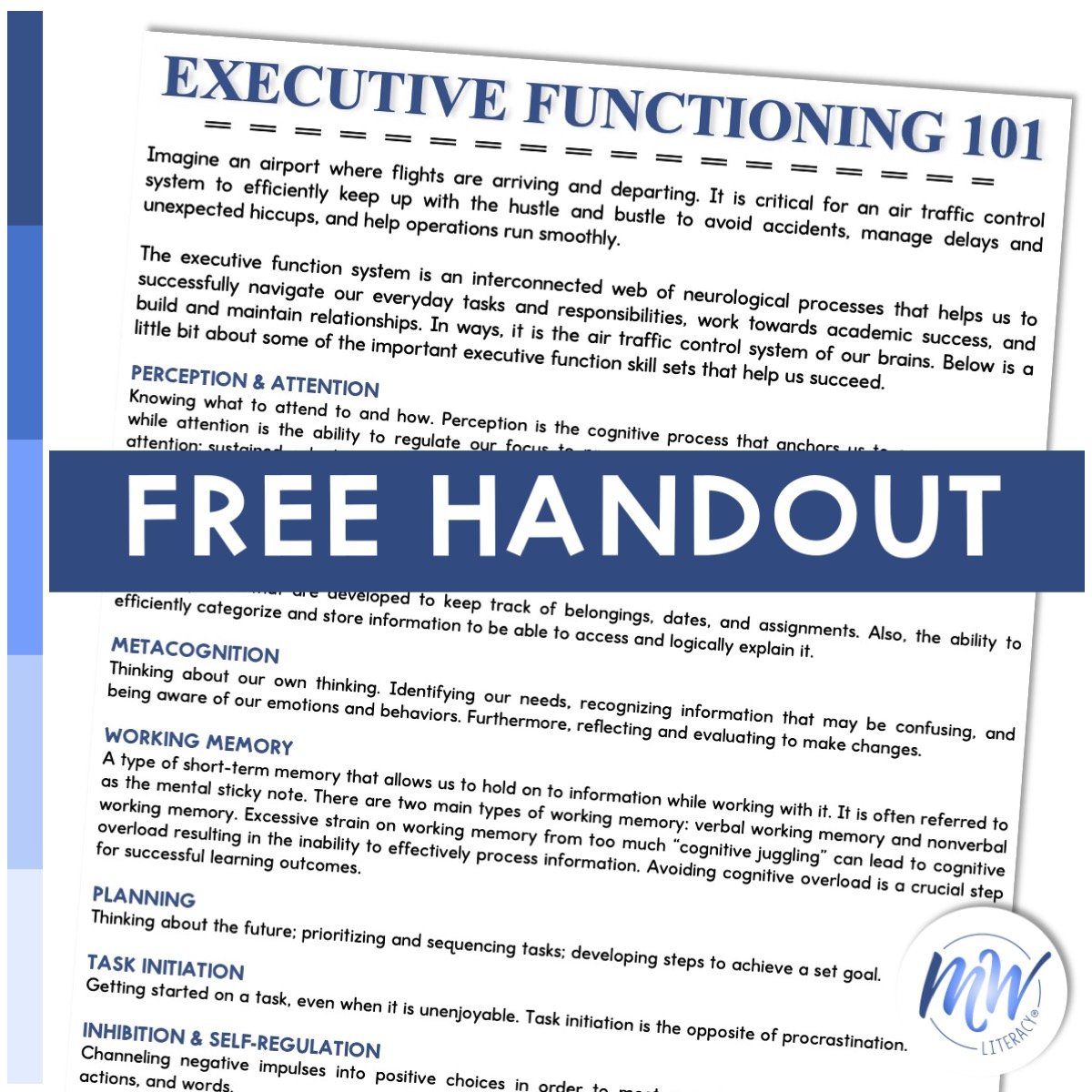WHAT IS EXECUTIVE FUNCTIONING?
It seems that executive functioning has become quite the buzz word lately, but at its core, executive functioning is vital for success both in and out of the classroom. Before we can discuss literacy success, we need to be talking about the executive function system.
Often, I hear parents tell me they never heard of this term until their child’s school mentioned it as an area of concern for which they needed support. When I first meet with these parents, this is the “executive functioning in a nutshell” overview I often provide:
Our executive function system is the air traffic control system in the prefrontal cortex of our brains that helps us to successfully navigate our everyday lives. Imagine an airport where flights are arriving and departing. It is critical for an air traffic control system to efficiently keep up with the hustle and bustle to avoid accidents and to help operations run smoothly. Executive function skills are vital for working toward academic success, building and maintaining personal relationships, and managing everyday tasks and responsibilities.
So, what are some of the executive function skills need for academic and personal success?
PERCEPTION & ATTENTION
Knowing what to attend to and how. Perception is the cognitive process that anchors us to our environment, while attention is the ability to regulate our focus to process relevant information. There are four types of attention: sustained, selective, alternating, and divided.
COGNITIVE FLEXIBILITY
Adapting to unexpected change; also, the ability to consider different perspectives and types of information.
ORGANIZATION
Having systems that are developed to keep track of belongings, dates, and assignments. Also, the ability to efficiently categorize and store information to be able to access and logically explain it.
METACOGNITION
Thinking about our own thinking. Identifying our needs, recognizing information that may be confusing, and being aware of our emotions and behaviors. Furthermore, reflecting and evaluating to make changes.
WORKING MEMORY
A type of short-term memory that allows us to hold on to information while working with it. It is often referred to as the mental sticky note. There are two main types of working memory: verbal working memory and nonverbal working memory. Excessive strain on working memory from too much “cognitive juggling” can lead to cognitive overload resulting in the inability to effectively process information. Avoiding cognitive overload is a crucial step for successful learning outcomes.
PLANNING
Thinking about the future; prioritizing and sequencing tasks; developing steps to achieve a set goal.
TASK INITIATION
Getting started on a task, even when it is unenjoyable. Task initiation is the opposite of procrastination.
INHIBITION & SELF-REGULATION
Channeling negative impulses into positive choices in order to meet a goal; managing thoughts, emotions, actions, and words.
TIME MANAGEMENT
Gauging the length of time a task will take, and using planning and organization strategies to use that time effectively and efficiently.
PERSEVERENCE
Focusing on the purpose of a goal and using strategies to work through challenges and frustrations.

